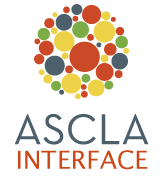By Diane Walden, LSPF vice-chair, correctional libraries senior consultant, Colorado State Library and Ray James, LSPF chair, researcher, Institutional Survey (Austin, Texas)
On the morning of June 29, 2010, we watched and listened as the American Library Association Council’s vote drew near on the report of the Intellectual Freedom Committee (IFC), and we saw an approaching milestone. We held our breaths, and then exhaled a silent but jubilant yell as the IFC report passed without protest. That report contained the “Prisoners’ Right to Read: An Interpretation of the Library Bill of Rights,” that for two years had consumed countless hours for us and hundreds of others concerned with library services to the incarcerated and detained.
Correctional agencies prohibit material with content that would threaten the safety and security of the incarcerated population, staff and local citizens. But every correctional librarian has a story to tell about material challenged beyond the specification of that rule: a science fiction novel that describes the making of a non-existent weapon, a health text that describes the treatment of a medical condition, a map of a foreign country, nudes in art and novels with content from which prisoners may get “bad ideas.”
For years we had discussed the shortcomings of the “Resolution on Prisoners’ Right to Read” to defend challenged material. Passed by ALA Council in 1982, the resolution urges adoption by other states of a California law on prisoner rights. While the resolution was necessary, as the sole ALA guideline for intellectual freedom and prisoners rights, it was also inadequate. Our journey began in earnest at ALA Midwinter in January 2009 when we made a commitment to create a “Library Bill of Rights” interpretation that would provide essential guidelines to librarians serving incarcerated and detained populations.
The journey continued at the 2009 ALA Annual Conference, where we informally presented a nascent “Prisoners’ Right to Read: an Interpretation of the Library Bill of Rights” to the IFC and gained valuable insights into how our project should proceed by attending discussion of other interpretations during their meetings. The intense interest in the document by IFC members Martin Garner, Melora Ranney Norman, and Helen Adams was invaluable on the road to Council endorsement.
From the fall of 2009 through the 2010 Midwinter Meeting, a new draft of “Prisoners’ Right to Read” was posted to ALA Connect and distributed via email. In search of a broader base of comment and criticism, we went outside ASCLA, Libraries Serving Special Populations Section, and particularly the Libraries Serving Prisoners Forum. Many people read, critiqued, sliced and diced—in one case, literally—that draft. Each refinement strengthened the document, and each step allowed “Prisoners’ Right to Read” to gain momentum.
This past spring, we forwarded the final iteration to the IFC in time for their mid-March meeting. The committee revisited each paragraph, word and concept so carefully deliberated by our team in the previous six months. The IFC version was then posted for comment by the library community at large. At the 2010 ALA Annual Conference, the ASCLA executive committee endorsed “Prisoners’ Right to Read” in concept as the text continued to evolve. Final changes were implemented and the IFC successfully requested adoption of “Prisoners’ Right to Read” in their report to Council on the closing day of conference.
The newly approved “Prisoners’ Right to Read” interprets the tenets of the “Library Bill of Rights” within the rules established by correctional administrators. It will be included in the ninth edition of the Intellectual Freedom Manual but is already integrated into the web supplement of Intellectual Freedom Manual 8th edition.
A set of words, however principled and sound, is meaningless without implementation. The next step in the journey is a complementary Q & A to be posted on ALA’s “Questions and Answers to the Interpretations of the Library Bill of Rights” page to assist correctional librarians with utilizing the “Prisoners’ Right to Read” in their library [our Q & A is not there but if a link to the Q & A page is necessary, it’s at http://www.ala.org/ala/issuesadvocacy/intfreedom/librarybill/interpretations/qanda.cfm]. A formal request will be made to Amnesty International and other human rights organizations to endorse the “Prisoners’ Right to Read” document and its principles. Contact will be made with the American Correctional Association and the Correctional Education Association to request that they acknowledge the document and encourage its implementation. The goal is for correctional agencies and governmental rule-makers to access and integrate “Prisoners’ Right to Read” into penal codes and procedures.
The importance of the passage of the “Prisoners’ Right to Read” quickly became clear in the news less than a month after its passage. In a New York Times article published on July 22, “Prison Books Bring Plot Twist to Cheshire Killings,” attorneys in the case of a Connecticut man accused of murder suggested that his prison reading might have influenced his later crime. State officials reacted in outrage that books containing violent scenarios were even available in prison, and seemed eager to convict prisoners’ reading. In fact, existing evidence shows that education and reading in prison reduces violence and recidivism. Protecting the rights of prisoners to read, to think, and to access information remains as an essential task for all who are free. We will know we have reached the finish line when “Prisoners’ Right to Read” enables a correctional librarian to achieve that goal.

1 comment
Prisoners Right to Read « Librarians Build Communities says:
Jul 12, 2011
[…] From ASCLA Interface: Prisoners Right to Read.— […]